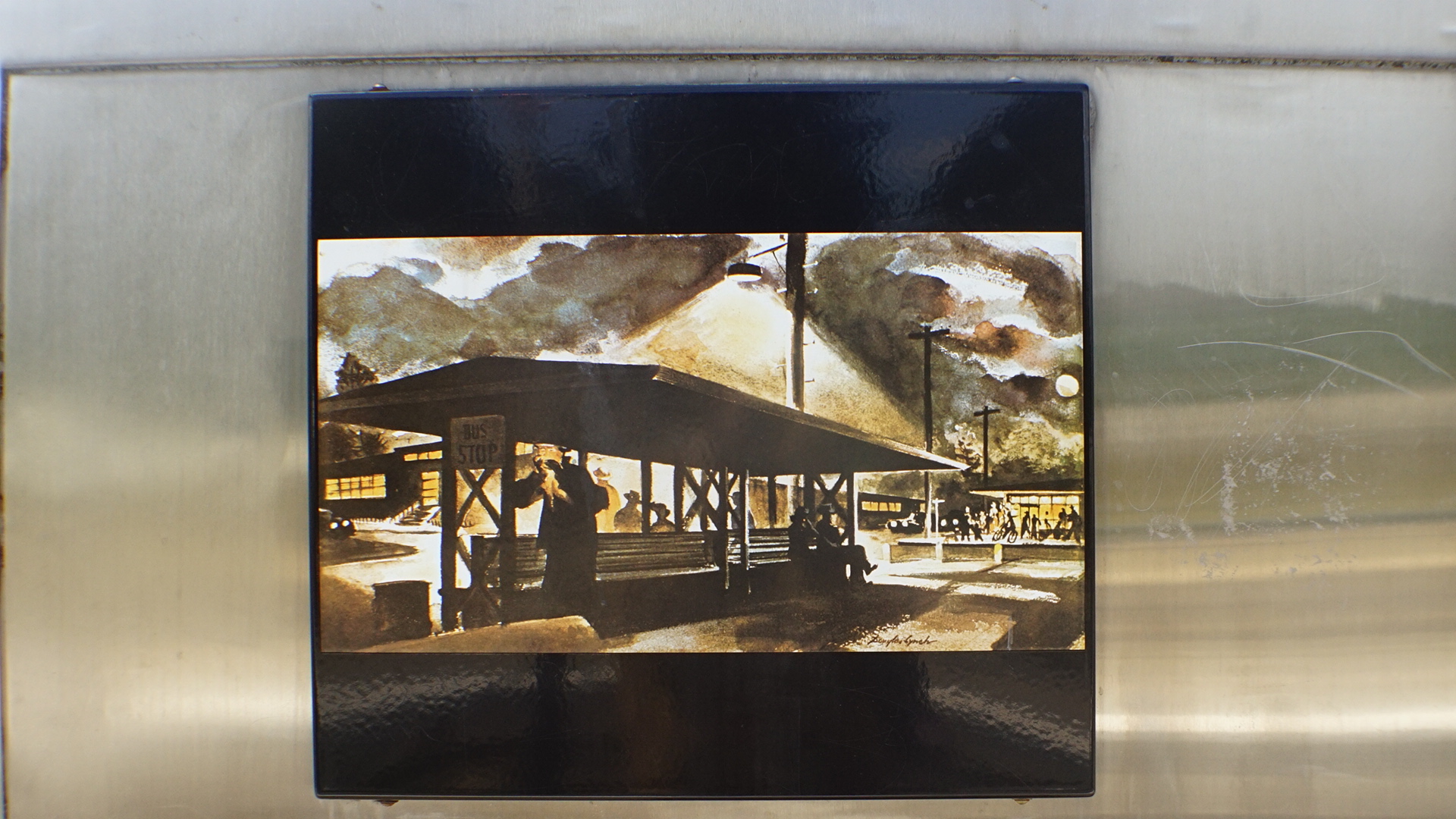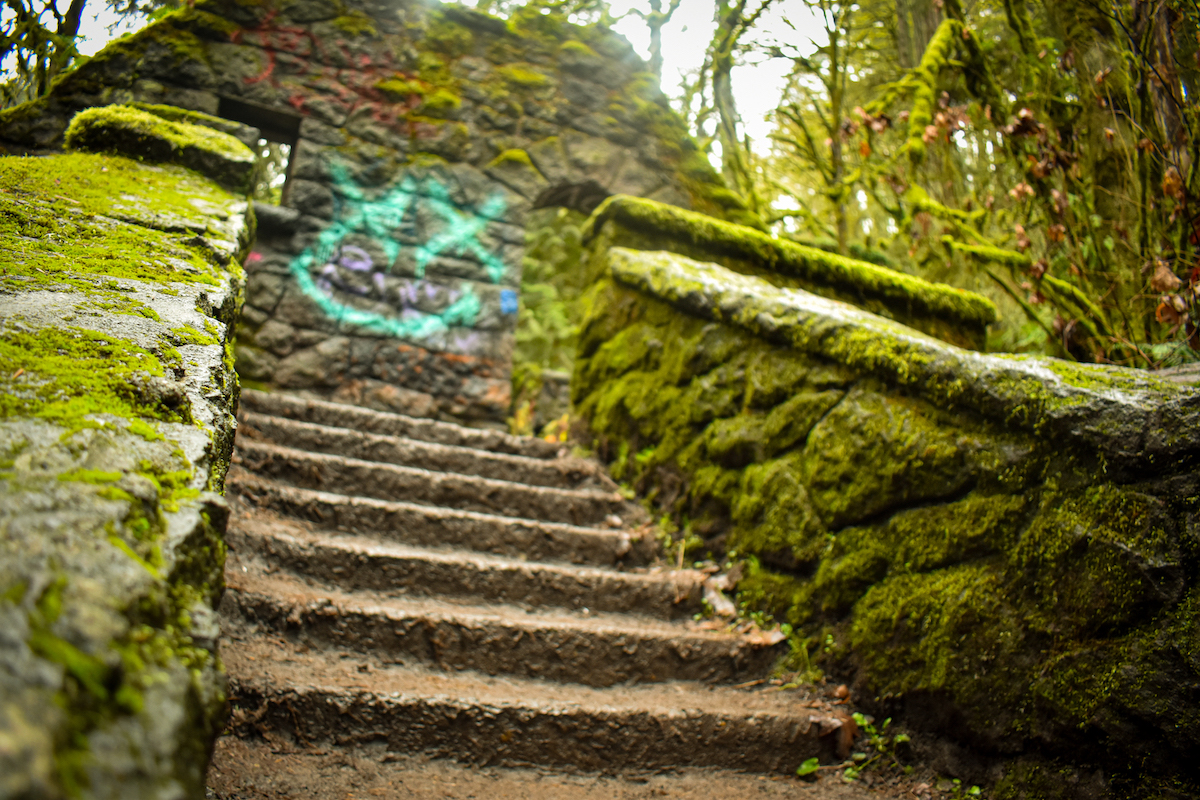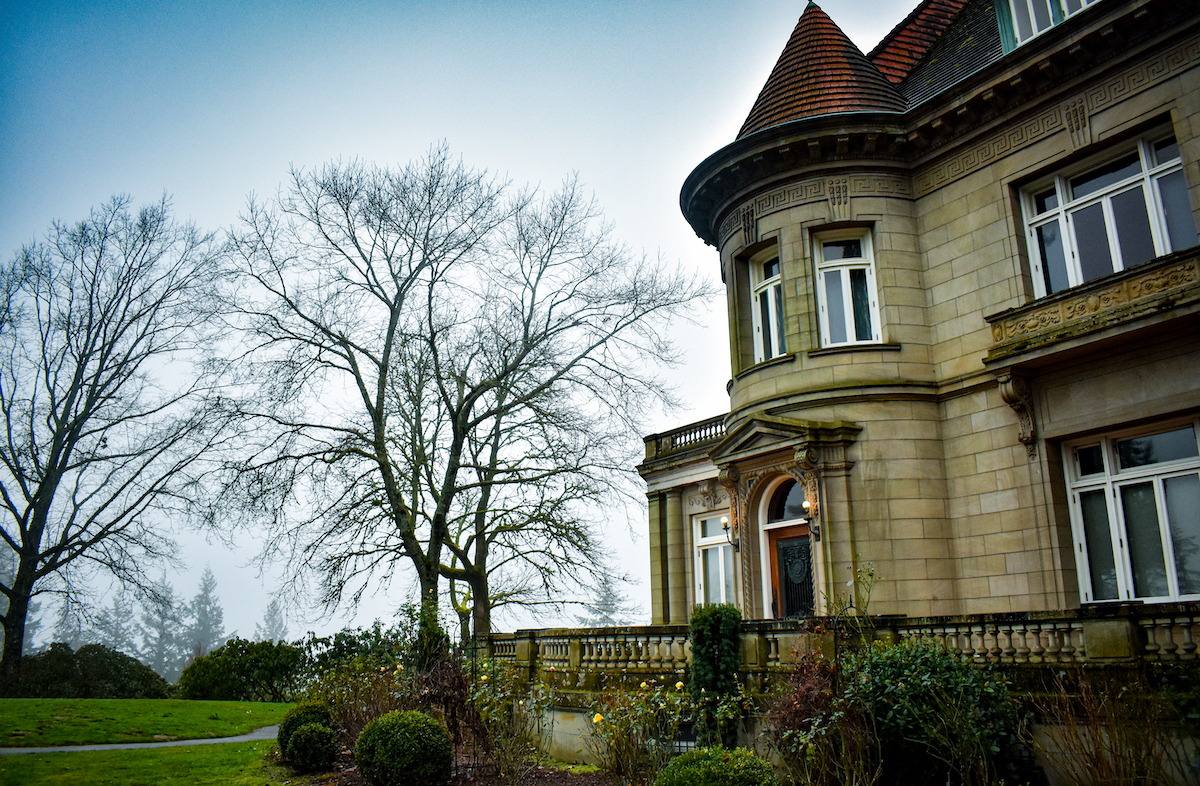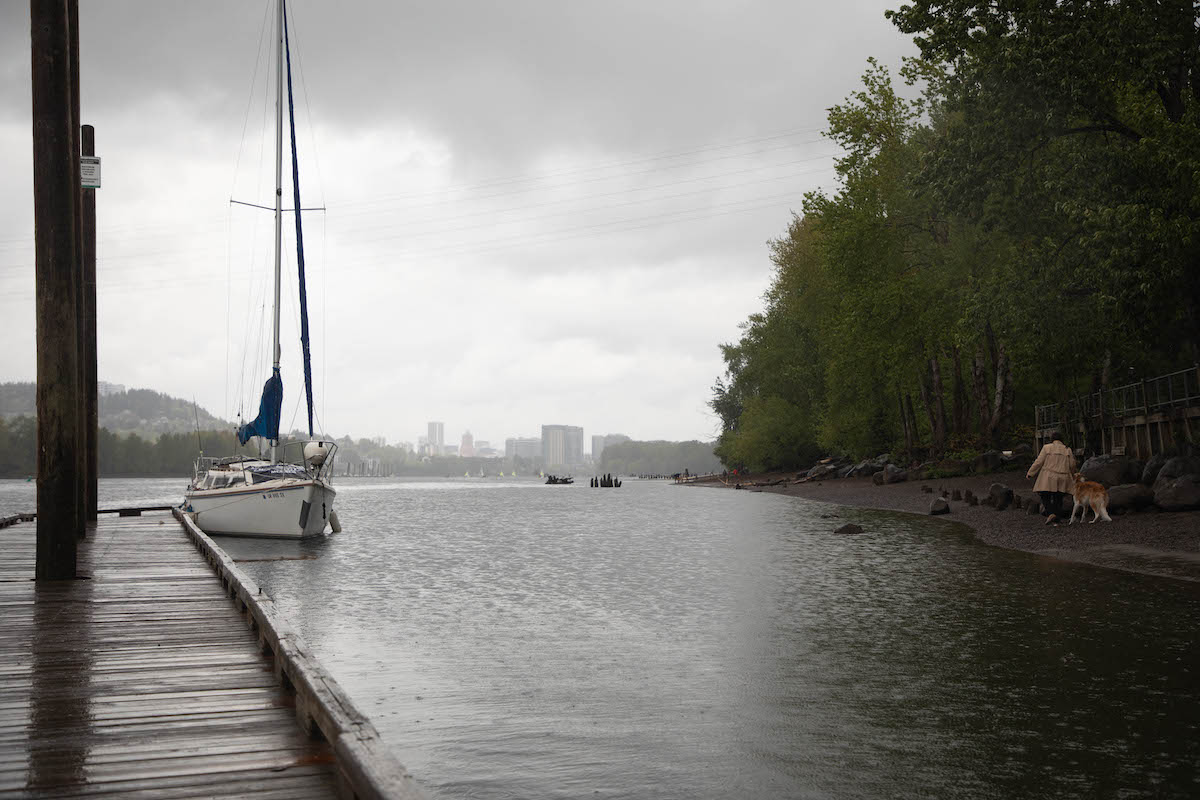There are a lot of great—and obvious—things to do outside in Portland during our mercilessly-brief dry season. The forest is in our backyard, and there are a plethora of wonderful beaches right outside the city. The middle of the year in Portland is also a great time to take stock of our city’s enduring mysteries. Many Portland natives or longtime residents take these curios for granted, although they’re sure to pique the interests of visitors and newcomers. Here are but four of Portland’s greatest mysteries.
The Witch’s Castle // Lower Macleay Trail, Forest Park
The entries on this list are ostensibly Portland mysteries that can only be fully appreciated during the summer months, but the Witch’s Castle might be the lone exception to that rule. A dreary drizzle really adds to the creepy ambience of this infamous Portland landmark, which is also referred to as the Stone House or the Macleay Park Shelter. It’s a jarring stone structure located smack in the middle of one of Forest Park’s most popular and accessible trails, and, for lack of a better expression, something just feels off about it. The structure’s sanctum is covered in strange, occult graffiti, and it’s not unusual to find disposed beer cans, glow sticks or other high school kegger miscellany strewn about, which is pretty terrible from an environmentalist perspective.
Legend has it that the Witch’s House is haunted by Mortimer Stump, a contract handyman who helped notorious Portland landowner Danford Balch clear this section of the woods for homebuilding in the mid-1800s. Stump allegedly fell in love with Balch’s daughter, and was murdered by Balch as a result.
Ghost stories notwithstanding, the actual origins of the Witch’s House are less glamorous—it was constructed as a rest stop for hikers at the beginning of the 20th century, though was badly damaged by a storm in 1962 and was never repaired, resulting in its current, creepy state.
Pittock Mansion // The West Hills
This is perhaps the least mysterious entry on the list—there are signs on the highway that lead you all the way to the Pittock Mansion’s doorstep, after all. Still, the history of the property is slightly mysterious. It originally belonged to publisher and business magnate Henry Pittock, who is notable for transforming The Oregonian from a weekly newspaper into the state’s most famous daily. Also, Georgiana, Pittock’s wife, was a fan of gardening, and helped launch the Portland Rose Festival.
The mansion was opened to the public in 1965, and has been offering tours ever since. The Pittock Mansion is also one of the best places in Portland for huge, sweeping views of the city; its grounds make for great picnics or sunset viewings.
Portland’s Freeway Ghost Ramps // East Bank Esplanade
Portland is unusual for a major city in that its freeways are littered with mysterious “ghost ramps”—interchanges that were proposed but never completed. The most infamous of these is visible from the East Bank Esplanade and the OMSI parking lot. This interchange would have served the abandoned Mt. Hood Freeway project, which would have cut through and decimated residential communities in SE Portland—a repeat of the destruction and displacement wrought by the construction of I-5 years earlier. The story goes that the communities who would have been impacted by the new freeway filed a suit, and the plans for it were eventually abandoned in 1974. Today, these freeway stubs are grim, creepy reminders of what could have been—but they also speak to the unrivaled power of community action.
Vanport’s remains // Delta Park, Vanport station
The tragedy of Vanport is one of the most shameful segments of Portland’s history, and shares some disturbing parallels with Hurricane Katrina. The town of Vanport was constructed along the lowlands of the Columbia River, and initially housed the construction workers employed at the Kaiser Shipyards during World War II. While these workers would eventually depart Vanport after the war ended, an influx of returning veterans and new residents kept the town alive. In 1948, a flood submerged the entire city of Vanport in the course of a single day, instantly leaving its 17,500 former residents without homes.
Because Vanport was initially intended to be a transient housing community, very few of the structures were strong enough to weather the flood. However, some of Vanport’s remains are still clearly visible from Delta Park, the area where Vanport used to be situated. A few roofs from houses that were destroyed in the 1948 Vanport flood are on display at the Vanport MAX station. And recently, a YouTuber by the name of Steve the Amateur Historian has dedicated a fair amount of research to this very topic—in 2017, he identified the remains of Vanport’s only standing movie theater, and argued that a stone structure along the Columbia slough was an amphitheater constructed by and for the residents of Vanport.








